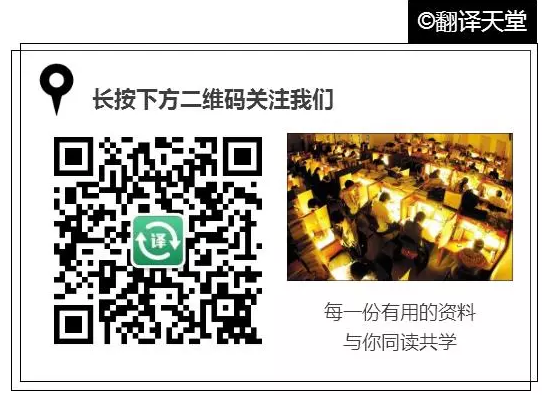The Spring Festival(春节)
The first day of the first lunar month is the New Year in the Chinese lunar calendar. Among the traditional Chinese festivals, this is the most important and the most bustling. Since it occurs at the end of winter and the beginning of spring, people also call it the Spring Festival.
Chinese have many traditional customs relating to the Spring Festival. Since the 23rd day of the 12th lunar month, people start to prepare for the event. Every family will undertake thorough cleaning, do their Spring Festival shopping, create paper-cuts for window decoration, put up New Year pictures, write Spring Festival couplets, make New Year cakes, and also prepare all kinds of food to bid farewell to the old and usher in the new.
New Year's Eve is the time for a happy reunion of all family members, when they sit around the table to have a sumptuous New Year's Eve dinner, talking and laughing, until daybreak, which is called "staying up to see the year out". When the bell tolls midnight on New Year's Eve, people eat dumplings. In ancient times, midnight was called zishi (a period of the day from 11 p.m. to 1 a.m.). Dumplings (jiaozi) are eaten because it sounds the same as "change of the year and the day" in Chinese.
From the first day of the lunar year, people pay New Year calls on relatives and friends, which is an important custom for the Spring Festival.
Setting off firecrackers is the favorite activity of children in the Spring Festival. According to legend, this could drive off evil spirits. The continuous sound of firecrackers can be heard everywhere, adding to the atmosphere of rejoicing and festivity.
Many places hold temple fairs. The wonderful dragon lantern dance and the lion dance performances, along with various handicraft articles and local snacks attract thousands of people.
With the development of the times, some changes have taken place in the customs of spending the Spring Festival. For example, to prevent environmental pollution, many cities have banned firecrackers. But this does not have an impact on the happy atmosphere of the festival. On New Year's Eve, family members get together to have dinner while watching TV programs.
For Chinese at home and abroad, the Spring Festival is always the most important festival.
农历的正(zheng)月初一,是中国的农历新年。在中国的传统节日中,这是一个最重要、最热闹的节日。因为过农历新年的时候,正是冬末春初,所以人们也把这个节日叫“春节”。
中国人过春节有很多传统习俗。从腊月二十三起,人们就开始准备过年了。在这段时间里,家家户户要大扫除,买年货,贴窗花,挂年画,写春联,蒸年糕,做好各种食品,准备辞旧迎新。
春节的前夜叫“除夕”。除夕之夜,是家人团聚的时候。一家人围坐在一起,吃一顿丰盛的年夜饭,说说笑笑,直到天亮,这叫守岁。除夕零点的钟声一响,人们还要吃饺子。古时候叫零点为“子时”,除夕的子时正是新旧年交替的时候,人们在这时吃饺子,是取“更岁交子”的意思。这也是“饺子”名称的由来。
过了除夕就是大年初一。从初一开始,人们要走亲戚、看朋友,互相拜年。拜年,是春节的重要习俗。拜年时,大家都要说一些祝愿幸福、健康的吉祥话。
放爆竹是春节期间孩子们最喜欢的活动。传说燃放爆竹可以驱妖除魔,所以每年从除夕之夜起,到处就响起了接连不断的爆竹声。阵阵烟花,声声爆竹,给节日增添了喜庆的气氛。
春节期间,很多地方还要举办庙会。庙会上精彩的舞龙舞狮表演,各式各样的工艺品和地方小吃,吸引千千万万欢度佳节的人们。
随时代的发展,过春节的习俗也有了一些变化。比如,为防止环境污染,很多城市已禁止燃放烟花爆竹。但这并不影响节日的热闹气氛。除夕之夜,家家户户仍然要团聚在一起,一边吃年夜饭,一边看精彩的电视节目,直到大年初一的清晨。
在中国和世界各地华夏子孙的心中,春节永远是最重要的节日。
Lantern Festival(元宵节)
The Lantern Festival falls on the 15th day of the 1st lunar month, usually in February or March in the Gregorian calendar. As early as the Western Han Dynasty (206 BC-AD 25), it had become a festival with great significance.
This day's important activity is watching lanterns. Throughout the Han Dynasty (206 BC-AD 220), Buddhism flourished in China. One emperor heard that Buddhist monks would watch sarira, or remains from the cremation of Buddha's body, and light lanterns to worship Buddha on the 15th day of the 1st lunar month, so he ordered to light lanterns in the imperial palace and temples to show respect to Buddha on this day. Later, the Buddhist rite developed into a grand festival among common people and its influence expanded from the Central Plains to the whole of China.
Till today, the lantern festival is still held each year around the country. Lanterns of various shapes and sizes are hung in the streets, attracting countless visitors. Children will hold self-made or bought lanterns to stroll with on the streets, extremely excited.
"Guessing lantern riddles"is an essential part of the Festival. Lantern owners write riddles on a piece of paper and post them on the lanterns. If visitors have solutions to the riddles, they can pull the paper out and go to the lantern owners to check their answer. If they are right, they will get a little gift. The activity emerged during people's enjoyment of lanterns in the Song Dynasty (960-1279). As riddle guessing is interesting and full of wisdom, it has become popular among all social strata.
People will eat yuanxiao, or rice dumplings, on this day, so it is also called the "Yuanxiao Festival."Yuanxiao also has another name, tangyuan. It is small dumpling balls made of glutinous rice flour with rose petals, sesame, bean paste, jujube paste, walnut meat, dried fruit, sugar and edible oil as filling. Tangyuan can be boiled, fried or steamed. It tastes sweet and delicious. What's more, tangyuan in Chinese has a similar pronunciation with "tuanyuan”, meaning reunion. So people eat them to denote union, harmony and happiness for the family.
In the daytime of the Festival, performances such as a dragon lantern dance, a lion dance, a land boat dance, a yangge dance, walking on stilts and beating drums while dancing will be staged. On the night, except for magnificent lanterns, fireworks form a beautiful scene. Most families spare some fireworks from the Spring Festival and let them off in the Lantern Festival. Some local governments will even organize a fireworks party. On the night when the first full moon enters the New Year, people become really intoxicated by the imposing fireworks and bright moon in the sky.
每年农历的正月十五日,春节刚过,迎来的就是中国的传统节日--元宵节。
元宵主要的活动就是看灯。东汉明帝时期,明帝提倡佛教,听说佛教有正月十五日僧人观佛舍利,点灯敬佛的做法,就命令这一天夜晚在皇宫和寺庙里点灯敬佛,令士族庶民都挂灯。以后这种佛教礼仪节日逐渐形成民间盛大的节日。该节经历了由宫廷到民间,由中原到全国的发展过程。
直到今天,元宵点灯的习俗仍然在中国的各地流传的,各式各样美丽的花灯在这一天都会点亮,孩子们提着自制的灯笼走街串巷,非常高兴。
猜灯谜也是元宵节的一项重要活动,花灯的主人会将谜面写在灯笼上,挂在门口,如果有人可以猜中,就能得到小小的礼物。这项活动最早起源于宋朝,因为谜语能启迪智慧又饶有兴趣,所以流传过程中深受社会各阶层的欢迎。
民间过元宵节吃元宵的习俗。元宵由糯米制成,或实心,或带馅。馅有豆沙、白糖、山楂、各类果料等,食用时煮、煎、蒸、炸皆可。起初,人们把这种食物叫“浮圆子”,后来又叫“汤团”或“汤圆”,这些名称“团圆”字音相近,取团圆之意,象征全家人团团圆圆,和睦幸福,人们也以此怀念离别的亲人,寄托了对未来生活的美好愿望。
随着时间的推移,元宵节的活动越来越多,白天有耍龙灯、耍狮子、踩高跷、划旱船扭秧歌、打太平鼓等传统民俗表演。到了夜晚,除了五颜六色的美花灯之外,还有艳丽多姿的烟火。大多数家庭会在春节时留下一些烟花等到元宵节这天燃放,而一些地方政府也会举办烟花大会,当新年的第一个月圆之夜在盛大的烟火表演中来临时,人们都陶醉在这令人难忘了烟花与皎洁的明月中。
Qingming Festival (清明节)
The Qingming (Pure Brightness) Festival is one of the 24 seasonal division points in China, falling on April 4-6 each year. After the festival, the temperature will rise up and rainfall increases. It is the high time for spring plowing and sowing. But the Qingming Festival is not only a seasonal point to guide farm work, it is more a festival of commemoration.
The Qingming Festival sees a combination of sadness and happiness.
This is the most important day of sacrifice. Both the Han and minority ethnic groups at this time offer sacrifices to their ancestors and sweep the tombs of the diseased. Also, they will not cook on this day and only cold food is served.
The Hanshi (Cold Food) Festival was usually one day before the Qingming Festival. As our ancestors often extended the day to the Qingming, they were later combined.
On each Qingming Festival, all cemeteries are crowded with people who came to sweep tombs and offer sacrifices. Traffic on the way to the cemeteries becomes extremely jammed. The customs have been greatly simplified today. After slightly sweeping the tombs, people offer food, flowers and favorites of the dead, then burn incense and paper money and bow before the memorial tablet.
In contrast to the sadness of the tomb sweepers, people also enjoy hope of Spring on this day. The Qingming Festival is a time when the sun shines brightly, the trees and grass become green and nature is again lively. Since ancient times, people have followed the custom of Spring outings. At this time tourists are everywhere.
People love to fly kites during the Qingming Festival. Kite flying is actually not limited to the Qingming Festival. Its uniqueness lies in that people fly kites not during the day, but also at night. A string of little lanterns tied onto the kite or the thread look like shining stars, and therefore, are called "god's lanterns."
The Qingming Festival is also a time to plant trees, for the survival rate of saplings is high and trees grow fast later. In the past, the Qingming Festival was called "Arbor Day". But since 1979, "Arbor Day" was settled as March 12 according to the Gregorian calendar.
清明是我国的二十四节气之一。由于二十四节气比较客观地反映了一年四季气温、降雨、物候等方面的变化,所以古代劳动人民用它安排农事活动。但是,清明作为节日,与纯粹的节气又有所不同。节气是我国物候变化、时令顺序的标志,而节日则包含着一定的风俗活动和某种纪念意义。因此,这个节日中既有祭扫新坟生别死离的悲酸泪,又有踏青游玩的欢笑声,是一个富有特色的节日。
清明节是我国传统节日,也是最重要的祭祀节日,是祭祖和扫墓的日子。扫墓俗称上坟,祭祀死者的一种活动。汉族和一些少数民族大多都是在清明节扫墓。由于清明与寒食的日子接近,而寒食是民间禁火扫墓的日子,渐渐的,寒食与清明就合二为一了,而寒食既成为清明的别称,也变成为清明时节的一个习俗,清明之日不动烟火,只吃凉的食品。
按照旧的习俗,扫墓时,人们要携带酒食果品、纸钱等物品到墓地,将食物供祭在亲人墓前,再将纸钱焚化,为坟墓培上新土,折几枝嫩绿的新枝插在坟上,然后叩头行礼祭拜,最后吃掉酒食回家。
与清明节扫墓的悲哀相反,人们在这个春光明媚的日子里,也一样是可以享受生活的。
放风筝也是清明时节人们所喜爱的活动。每逢清明时节,人们不仅白天放,夜间也放。夜里在风筝下或风稳拉线上挂上一串串彩色的小灯笼,象闪烁的明星,被称为“神灯”。
清明前后,春阳照临,春阳照临,春雨飞洒,种植树苗成活率高,成长快。因此,自古以来,我国就有清明植树的习惯。有人还把清明节叫作“植树节”。植树风俗一直流传至今。1979年,人大常委会规定,每年三月十二日为我国植树节。这对动员全国各族人民积极开展绿化祖国活动,有着十分重要的意义。
Dragon Boat Festival(端午节)
The Dragon Boat Festival, the 5th day of the 5th lunar month, has had a history of more than 2,000 years. It is usually in June in the Gregorian calendar.
There are many legends about the evolution of the festival, the most popular of which is in commemoration of Qu Yuan (340-278 BC). Qu Yuan was minister of the State of Chu and one of China's earliest poets. In face of great pressure from the powerful Qin State, he advocated enriching the country and strengthening its military forces so as to fight against the Qin. However, he was opposed by aristocrats headed by Zi Lan, and later deposed and exiled by King Huai. In his exiled days, he still cared much for his country and people and composed immortal poems including Li Sao (The Lament), Tian Wen (Heavenly Questions) and Jiu Ge (Nine Songs), which had far-reaching influences. In 278 BC, he heard the news that Qin troops had finally conquered Chu's capital, so he finished his last piece Huai Sha (Embracing Sand) and plunged himself into the Miluo River, clasping his arms to a large stone. The day happened to be the 5th of the 5th month in the Chinese lunar calendar. After his death, the people of Chu crowded to the bank of the river to pay their respects to him. The fishermen sailed their boats up and down the river to look for his body. People threw into the water zongzi (pyramid-shaped glutinous rice dumplings wrapped in reed or bamboo leaves) and eggs to divert possible fish or shrimp from attacking his body. An old doctor poured a jug of reaglar wine (Chinese liquor seasoned with realgar) into the water, hoping to turn all aquatic beasts drunk. That's why people later followed the customs such as dragon boat racing, eating zongzi and drinking realgar wine on that day.
Dragon boat racing is an indispensable part of the festival, held all over the country. As the gun is fired, people will see racers in dragon-shaped canoes pulling the oars harmoniously and hurriedly, accompanied by rapid drums, speeding toward their destination. Folk tales say the game originates from the activities of seeking Qu Yuan's body, but experts, after painstaking and meticulous research, conclude that dragon boat racing is a semi-religious, semi-entertaining program from the Warring States Period (475-221 BC). In the following thousands of years, the game spread to Japan, Vietnam and Britain as well as China's Taiwan and Hong Kong. Now dragon boat racing has developed into an aquatic sports item which features both Chinese tradition and modern sporting spirit. In 1980, it was listed into the state sports competition programs and has since been held every year. The award is called "Qu Yuan Cup."
Zongzi is an essential food of the Dragon Boat Festival. It is said that people ate them in the Spring and Autumn Period (770-476 BC). In early times, it was only glutinous rice dumplings wrapped in reed or other plant leaves and tied with colored thread, but now the fillings are more diversified, including jujube and bean paste, fresh meat, and ham and egg yolk. If time permits, people will soak glutinous rice, wash reed leaves and wrap up zongzi themselves. Otherwise, they will go to shops to buy whatever stuff they want. The custom of eating zongzi is now popular in North and South Korea, Japan and Southeast Asian nations.
On Dragon Boat Festival, parents also need to dress their children up with a perfume pouch. They first sew little bags with colorful silk cloth, then fill the bags with perfumes or herbal medicines, and finally string them with silk threads. The perfume pouch will be hung around the neck or tied to the front of a garment as an ornament. They are said to be able to ward off evil.
端午节是古老的传统节日,始于中国的春秋战国时期,至今已有2000多年历史。
据《史记》“屈原贾生列传”记载,屈原,是春秋时期楚怀王的大臣。他倡导举贤授能,富国强兵,力主联齐抗秦,遭到贵族子兰等人的强烈反对,屈原遭馋去职,被赶出都城,流放到沅、湘流域。他在流放中,写下了忧国忧民的《离骚》、《天问》、《九歌》等不朽诗篇,独具风貌,影响深远(因而,端午节也称诗人节)。公元前278年,秦军攻破楚国京都。屈原眼看自己的祖国被侵略,心如刀割,但是始终不忍舍弃自己的祖国,于五月五日,在写下了绝笔作《怀沙》之后,抱石投汨罗江身死,以自己的生命谱写了一曲壮丽的爱国主义乐章。
传说屈原死后,楚国百姓哀痛异常,纷纷涌到汨罗江边去凭吊屈原。渔夫们划起船只,在江上来回打捞他的真身。有位渔夫拿出为屈原准备的饭团、鸡蛋等食物,“扑通、扑通”地丢进江里,说是让鱼龙虾蟹吃饱了,就不会去咬屈大夫的身体了。人们见后纷纷仿效。一位老医师则拿来一坛雄黄酒倒进江里,说是要药晕蛟龙水兽,以免伤害屈大夫。后来为怕饭团为蛟龙所食,人们想出用楝树叶包饭,外缠彩丝,发展成棕子。
賽龙舟,是端午节的主要习俗。相传起源于古时楚国人因舍不得贤臣屈原投江死去,许多人划船追赶拯救。他们争先恐后,追至洞庭湖时不见踪迹。之后每年五月五日划龙舟以纪念之。借划龙舟驱散江中之鱼,以免鱼吃掉屈原的身体。竞渡之习,盛行于吴、越、楚。
其实,“龙舟竞渡”早在战国时代就有了。在急鼓声中划刻成龙形的独木舟,做竞渡游戏,以娱神与乐人,是祭仪中半宗教性、半娱乐性的节目。后来,赛龙舟除纪念屈原之外,在各地人们还付予了不同的寓意。此外,划龙舟也先后传入邻国日本、越南等及英国。1980年,赛龙舟被列入中国国家体育比赛项目,并每年举行“屈原杯”龙舟赛。
端午节吃粽子,这是中国人民的又一传统习俗。粽子,又叫“角黍”、“筒粽”。其由来已久,花样繁多。
据记载,早在春秋时期,用菰叶(茭白叶)包黍米成牛角状,称“角黍”;用竹筒装米密封烤熟,称“筒粽”。一直到今天,每年五月初,中国百姓家家都要浸糯米、洗粽叶、包粽子,其花色品种更为繁多。从馅料看,北方多包小枣的北京枣粽;南方则有豆沙、鲜肉、火腿、蛋黄等多种馅料,其中以浙江嘉兴粽子为代表。吃粽子的风俗,千百年来,在中国盛行不衰,而且流传到朝鲜、日本及东南亚诸国。
端午节小孩佩香囊,传说有避邪驱瘟之意,实际是用于襟头点缀装饰。香囊内有朱砂、雄黄、香药,外包以丝布,清香四溢,再以五色丝线弦扣成索,作各种不同形状,结成一串,形形色色,玲珑可爱。











